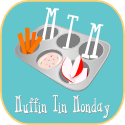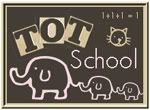I know I've spent an exorbitant amount of time thinking about what to feed my toddler ... what she'll actually eat, what has some good nutritional value, what makes for a balanced meal, ... but I haven't spent nearly enough time considering the dangers posed by those foods. Especially the danger of choking ... how to prevent it and what to do if/when it happens.
This post was written by my good friend Deann. Her daughter Sahara, a cautious and neat eater ... uses utensils like a pro, takes one bite at a time and barely needs a bib (the complete opposite of my own toddler) has had two recent choking incidents.
This post was written by my good friend Deann. Her daughter Sahara, a cautious and neat eater ... uses utensils like a pro, takes one bite at a time and barely needs a bib (the complete opposite of my own toddler) has had two recent choking incidents.
It was a routine lunch time. My girl was having some dinosaur style chicken nuggets, green peas, and some other yummy lunch item that I can't remember now. I was trying to get the nuggets cut up a bit smaller when my sweet Sahara grabs my fingers and looks at me with eyes wide open in a mix of shock and fear. She was choking on one of those darn chicken nuggets. I tried not to panic and whacked her on the back a few good times and the chunk came up, thankfully!
It was a scary moment for both of us! I am so thankful that I am usually very close when its a meal time, I would have felt more than horrible to have walked away for too long during that one crucial moment and not been there to help her. The realization of the possible outcome is more than I can bear to think about.
We recently had a second choking experience at dinner with my in-laws and husband present. Sahara was doing so well at chewing up green beans, loving eating them as a matter of fact, when suddenly she was choking on one. She didn't quite get it chewed up well enough and most of the bean was intact and stuck in her throat. My husband actually did a mouth sweep to get it out and that also worked well, especially for the bean scenario. Once again, we were reminded to make sure that things are cut up, even if they seem to be handling chewing the food item with ease.
So, some rules that I've set up are 1) always cut up food in smaller pieces, even if you think that he/she is old enough to handle bigger pieces; 2) DO NOT walk far away!; 3) Keep an eye on the kiddo while they are eating; 4) DO NOT let them walk around with snacks, make them finish them sitting down while you are nearby
Here are a few tips from the American Academy of Pediatrics:
What can I do to keep my child from choking?
Hot dogs, Nuts and seeds, Chunks of meat or cheese, Whole grapes, Hard, gooey, or sticky candy, Popcorn, Chunks of peanut butter, Raw vegetables, Fruit chunks, such as apple chunks, Chewing gum
Dangerous household items
Keep the following household items away from infants and children:Balloons, Coins, Marbles, Toys with small parts, Toys that can be squeezed to fit entirely into a child's mouth, Small balls, Pen or marker caps, Small button-type batteries, Medicine syringes
What you can do to prevent choking
Learn CPR (cardiopulmonary resuscitation) (basic life support).Be aware that balloons pose a choking risk to children up to 8 years of age.
Keep the above foods from children until 4 years of age.
Insist that children eat at the table, or at least while sitting down. They should never run, walk, play, or lie down with food in their mouths.
Cut food for infants and young children into pieces no larger than one-half inch, and teach them to chew their food well.
Supervise mealtime for infants and young children.
Be aware of older children's actions. Many choking incidents occur when older brothers or sisters give dangerous foods, toys, or small objects to a younger child.
Avoid toys with small parts, and keep other small household items out of the reach of infants and young children.
Follow the age recommendations on toy packages. Age guidelines reflect the safety of a toy based on any possible choking hazard as well as the child's physical and mental abilities at various ages.
Check under furniture and between cushions for small items that children could find and put in their mouths.
Do not let infants and young children play with coins.
Source: Choking Prevention and First Aid for Infants and Children (Copyright � 2006 American Academy of Pediatrics, Updated 4/06)












4 comments:
Thanks for posting! One guideline we've used is that if it can fit through a toilet paper tube, it can choke our child. It's a pretty simple way for us to check toys especially.
Just as an FYI too, I carry a child and infant CPR card in my diaper bag. I'll see if I can figure out where I got it and get a couple for you guys and D.
Monkey choking has always been one of my huge fears. Great post! :)
So for those of you are already mommas of two - how do you handle the possibilty of #2 getting ahold of toys that are choking hazards? I have no clue how to baby proof with a toddler and a baby under one roof!
An insightful post on ToddlerBrain
I did come across a websitehttp://www.gotoaid.com/. It’s has all information on first aid emergencies. It has information on Human emergencies and even for pets like cat or dog. Hope it help you guys too.
Signature: Online First Aid Kit
Post a Comment